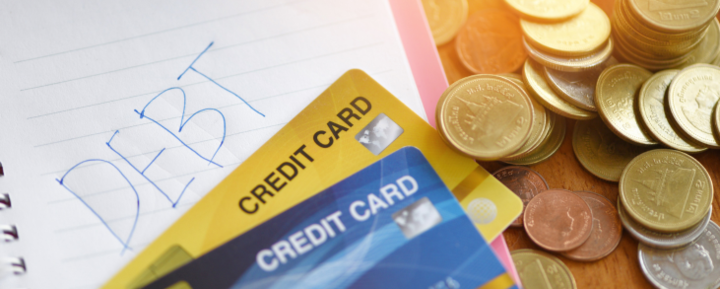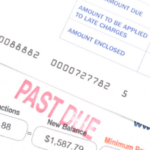Understanding your credit card statement can sometimes be like understanding Calculus – confusing.
Are you taking the time to read your credit card statement every month or simply paying the bill when it rolls in? Here are some quick tips to help you effectively read your credit card statement and use the information to better manage your money.
What Is a Credit Card Statement?
A credit card statement is a document your card issuer provides every month showing you your transactions from the previous billing cycle, along with some other information. Here’s how a credit card statement is typically broken down:
- Payment information: Here, you’ll see your current balance, the minimum payment due, and your due date. In some cases, you may also see a section showing how long it’ll take you to pay off your debt if you make only the minimum monthly payment.
- Account summary: This area spells out how your current balance was calculated, which will include your new charges from the past billing cycle, statement credits and payments, and any interest and fees that you incurred. You’ll also see your credit limit information in this section.
- Rewards summary: If you have a rewards credit card, this section will detail how much you earned in the previous billing cycle and where the cash back, points, or miles came from.
- Information about your account: Here is where you’ll find the legalese that credit card companies are required to include in every statement you see, including the steps you can take if you find an error.
- Payments and credits: This section details the payments, statement credits, and refunds that occurred since your last credit card statement was generated.
- New charges: Here, you’ll find all of the purchases you made during the statement’s billing cycle. You’ll typically see the date, the merchant name, and the amount of the transaction.
- Interest charges: If you owe interest on your current statement, you’ll find out how much you owe here. The section will also tell you how much interest you’ve incurred year to date.
How to Read Your Credit Card Statement
For the most part, the information found in your statement is self-explanatory. However, if you want to be proactive about credit card debt and budgeting, here are some steps you can take while reading your statement.
Verify Charges and Credits
The first thing you want to check is your Account Summary to verify all of the charges and purchases on your credit card statement. It is important to double-check these charges to avoid becoming a victim of fraud or identity theft.
If you hold onto your receipts, gather them up to help you verify your purchases. For example, if you went to a restaurant and paid $13 for food, then you should see that amount on your statement. If you see two charges of $13, then it may be a double charge. This happens often and can be taken care of by simply calling the restaurant or disputing the charge.
Did you return that shirt you never wore last month to Macy’s? It is important to make sure this return has been applied to your credit card and shows up on your statement.
This exercise will also help you identify where your money is going. If you’re looking to cut back in certain areas of your spending to pay off debt or save, this is where you can determine what to cut.
Check Interest and Fees
You may notice finance charges on your credit card statement and wonder what that means. This is the amount of interest and fees that you are getting charged for each month.
Keep in mind this number isn’t always the same every month. Also, if you pay your card in full every month, then you won’t see finance charges being applied to your statement. Some cards have a minimum finance charge that is applied to your statement every month, but it’s typically less than a few dollars.
If you’re showing finance charges, consider making it a priority to pay off your card in full every month to avoid expensive interest.
Know Your Credit Limit and Available Credit
Your credit limit on your credit card statement is the total amount you have to spend on your credit card before any purchases are made — this is before any finance charges, balance transfers, or any other fees. You’ll also see a cash advance limit, which is typically lower than the card’s general credit limit.
Your available credit, on the other hand, is the amount of money you have left to spend on your credit card. For example, your credit limit may be $5,000, and you’ve spent $3,000; this means the total credit you have available is $2,000.
Try your best to never exceed or even get close to reaching your limit. In most cases, a credit card company will simply decline a charge if it results in going over your limit. If you do manage to exceed the limit, some card issuers may charge a fee.
Bumping up against your credit limit can also damage your credit. Thirty percent of your FICO credit score is determined by how much you owe, and your credit utilization rate — the percentage of your credit limit you’re using at a given time — is an influential factor. There’s no hard-and-fast rule for what your utilization rate should be, but the lower it is, the better.
It’s also important to note that your credit card limit can change over time. Credit card companies may periodically run a soft credit check (this won’t hurt your credit score) and ask you for updated income information.
If your financial situation has improved and you’ve used your credit card responsibly — paying off your balance in full every month, paying over the minimum, or always paying on time — you may be rewarded with a credit limit increase. This doesn’t mean you should spend more than you earn. Keep doing what you’re doing and make sure all payments are on time.
On the flip side, these periodic evaluations could also result in your card issuer lowering your credit limit, which could impact your ability to use the card and also your credit score.
Check What You Owe
Make sure you’re aware of the minimum payment that you owe for the month, your payment due date, and your current payment due. Try your best to pay more than the minimum each month. Remember, you are not only paying off your purchases for the month but also interest and fees.
If you continue to pay the minimum each month, then you risk falling into deeper debt. The average late fee on credit cards can vary from $20 to $40. It’s crucial to always make sure your payments are on time so you can avoid fees and potential damage to your credit score.
Your current payment due is the total amount that you owe on your credit card statement. If you choose, you can pay off this full amount each month or pay a smaller amount and incur interest. Also, note that you can make multiple payments throughout the month, which can help you pay off your debt quicker.
Know Your APR
APR stands for annual percentage rate, which represents the total cost of borrowing, including both interest and fees. If you are not one to pay off your credit card in full every month, then you may want to keep a close eye on this number. If you have a low APR, then you will be paying less in interest.
Most credit cards offer variable APRs, which means your rate will fluctuate based on the going prime rate at the time. That said, credit card companies may change your APR even if you have a fixed interest rate. You will avoid paying interest if you pay off the full balance of your credit card every month.
Get out of the habit of simply paying your credit card bill every month and consider checking your statement beforehand. If you check your credit card statement every month, you will always be in the know.








